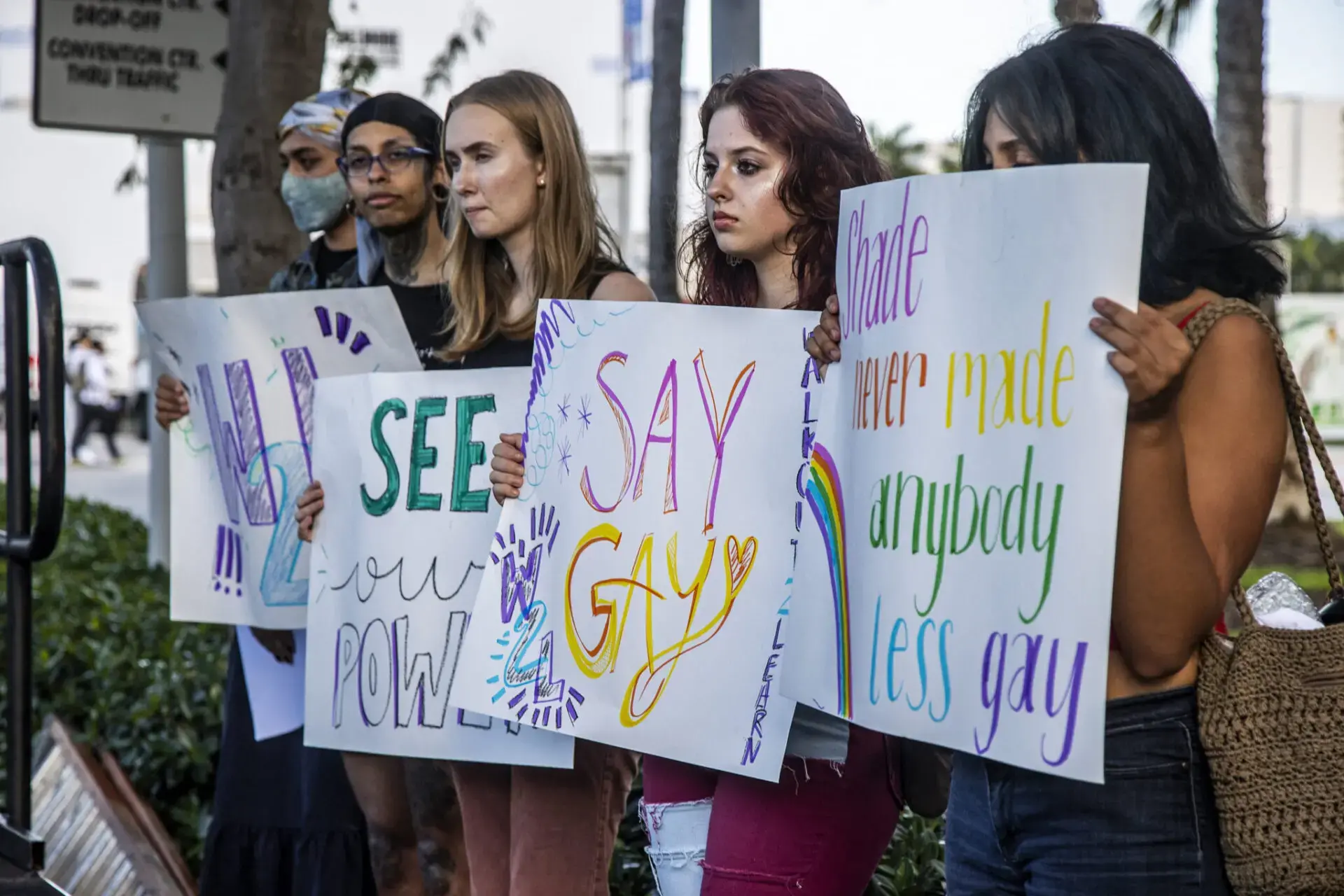
A year ago, PEN America published Hate in the Headlines: Journalism and the Challenge of Extremism, a report examining the blurring line between right-wing and antidemocratic extremism and U.S. politics from 2016 to 2022 and the challenges facing journalists reporting on these dynamics. As we approach another election, it’s worth revisiting what we learned during those volatile years, and what journalists can do to better inform voters and hold institutions and politicians accountable.
In Hate in the Headlines, we found that extremists have spread their ideology and tactics beyond organized hate groups, filling seats in local, state, and federal elected office, building inroads with mainstream elected officials and party policy platforms, and animating a host of existing threats to free expression like disinformation, attacks on the press, racist harassment, and antidemocratic obstruction. In the face of these developments, more than 75 journalists PEN America interviewed described a media industry caught flat-footed — questioning what went wrong and revisiting fundamental norms of how elections, politicians, and race are covered at the local, regional, and national levels.
Facts Forward: A Journalist’s Guide to Disinformation
Though journalists have worked to catch up, the challenge of extremism in U.S. politics hasn’t gone away. In many ways, it’s only expanded and matured in the last year, finding new avenues for infiltration in mainstream political speech. But how can journalists identify and report on the evolving influence and threat of extremism in national politics without amplifying and normalizing its message?

At the annual Online News Association (ONA) Conference last August, ONA and PEN America gathered five leading journalists tackling these issues in their newsrooms for a featured session called “The Role of News in Combating Extremism Recruiting.” Here are five major takeaways for journalists and advocates about what’s changed since the 2022 midterm elections, why this issue is so much more than Donald Trump, and what journalists need to know to hold extremists — and their newsrooms — accountable in 2024:
1. Extremism is a “dynamic, evolving, complex space” – look out for onramps
Extremism isn’t a single belief system — it’s a broad spectrum of identity-based, anti-democratic ideologies and tactics that can be adapted across issues, audiences, and scapegoats, and used to build powerful coalitions.
- Don’t discount the pandemic: Disinformation surrounding the pandemic served as a tool for elected officials and extremist actors to draw skeptics into more extreme conspiracy theories and political violence, says Odette Yousef, domestic extremism correspondent for NPR. “People would start with some vaccine hesitancy, and then suddenly, they were swimming in the same waters online with people that have antisemitic or transphobic views. And so this was an opportunity for people with really extreme ideas to find common cause on one issue.”
- Follow the money: On anti-trans extremism and violence, Lewis Raven Wallace, author of The View from Somewhere: Undoing the Myth of Objectivity, recommended the podcast, The Anti-Trans Hate Machine, which investigates the multi-million dollar campaign to radicalize suburban communities around anti-LGBTQ disinformation.
- Test the climate: Dana Coester, editor-in-chief of the nonprofit digital news outlet 100 Days in Appalachia, said her newsroom is watching out for emerging links between the anti-climate-change movement in Appalachia and violent extremism.
- Look beyond ideology: Coester also stressed that people espousing extremist ideas are often affiliated and don’t always view themselves as extremists. Journalists must look out for who’s benefiting tactically: “It’s not all ideologically driven.”
2. Balance isn’t always truth
Calling out extremist politicians and actors isn’t always popular. In some of the regions in Europe and Asia where Patrick Boehler, head of innovation and audience engagement for Radio Free Europe, works, reporting on links between extremism and the government can get your newsroom labeled “extremist” itself. In the U.S., reporting on right-wing extremism — especially during an election season or as a journalist of color — can still draw accusations of bias. Ultimately, the panelists say, let the facts guide your coverage; and in the words of Yousef, “the numbers universally show that the violence is being committed by the far right.”
3. Choose your words – and stories – intentionally
To adequately cover extremism, “you have to talk to extremists, but you don’t have to platform them,” says Hannah Allam, national security reporter for The Washington Post. Extremists will seek to use euphemisms and deliberately lie and mislead to pitch their views as more palatable. Don’t let them — call a spade a spade and avoid parroting direct quotes. Allam uses a “delta,” or change, test when deciding how to cover extremist networks in the field: “If we’re not furthering our understanding of these networks or not learning something really revealing or new, we probably don’t need to quote them.” Boehler emphasized the need for that kind of thought process, especially when working in polarized environments. In Radio Free Europe’s collaboration with Trusting News, he and his colleagues are encouraged to ask themselves — and share with audiences, “Why are we talking about this? Why are we covering this, and what do we want to achieve?”
4. It is in every beat
As extremists find new onramps for recruiting individuals to their viewpoints and gaining political influence, editors need to think about reporting on extremism as a newsroom-wide issue. A single extremism beat is no longer sufficient. “If you’re not thinking about [extremism] as part of your culture beats, as part of your health beats, as part of literally every beat in the newsroom, you’re not covering what’s happening,” says Yousef.
And as part of that restructure, newsrooms will need to look inward. “White supremacy and transphobia are not just out there, something that newsrooms cover,” added Wallace. In Hate in the Headlines, we stressed that investment in newsroom diversity in staff and coverage resulted in better extremism reporting at local newsrooms around the country.
5. Protect yourself
“Digitally, physically, and mentally” says Allam. As more reporters embrace extremism as a part of their beat, they will likely face safety threats from extremist actors. Veteran extremism reporters say building a network of support and information-sharing can help, alongside online tools: Yousef recommends PEN America’s Digital Safety Snacks to ward off doxing, hacking, and other forms of on- and offline violence. For more resources, see PEN America’s Online Harassment Field Manual and Appendix A: Resources in Hate in the Headlines.
Ryan Howzell is research program manager at PEN America. She moderated “The Role of News in Combating Extremism Recruiting” at ONA23 and is a co-author of Hate in the Headlines: Journalism and the Challenge of Extremism.









